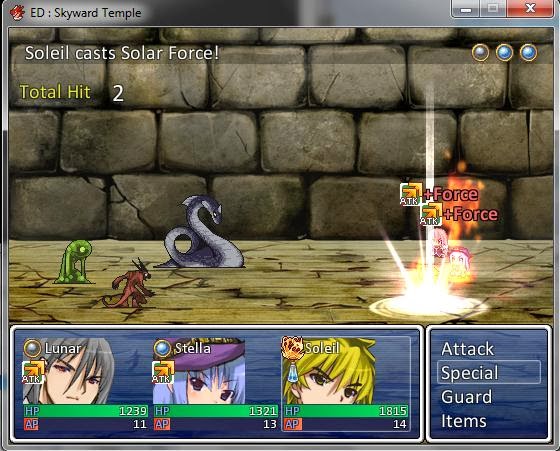

That is, if our question is answered “yes”, do a lot more damage if it’s answered “no”, do standard damage.īut what’s our question? Whether the enemy has the Mark state. So the damage side of our equation might look something like It attacks twice,but as with all of Nick’s attacks, we want it to do more damage if the target is marked. You can use this writing to give variables values.Īs an example, let’s take a look at an attack I just made for Nick, “Ninja Attack.” No one else will be able to use it except Nick. So, is x greater than y? If yes, the result is “1” if no, the result is “2”. You can read x > y ? as “is x greater than y?” After the question mark are the results for yes and no. We can replace this with a ternary operator, which looks like: The letters level mean "current level".The letters tp mean "current tension points".The letters mp mean "current mana points".The letters hp mean "current hit points".The letters mmp mean "maximum mana points".The letters mhp mean "maximum hit points".Here is a reminder of the abbreviations you can use to point to your character or your target's characteristics: So the default attack formula, “a.atk * 4 – b.def * 2″, means that the attack will deal attacker’s attack stat multiplied by 4, minus target’s defense stat multiplied by 2. That bar determines the damage dealt by an attack, and uses two letters – a and b – to signify the attacker and target, respectively. For any attack that Nick can do, we want to increase it to marked enemies. Here's where the bulk of the work takes place. Under "Effects", set the parameter to "Add State," and then select the state you created in the first step.Make sure your occasion is set to "Only in Battle" - wouldn't make sense to cast this skill when there are no enemies!.It's up to you to decide things like resource costs, MP or TP, speed, how many enemies can get marked, animation, etc. Once you've figured out these parameters, set up your skill. A thief, or a mutant chameleon, might have the inherent ability to dodge the mark. Resistences - while not handled in the skill window, consider also whether you want certain enemies to resist the application of the mark.You can alter the chance of your skill applying the state by changing the % in the "Effects" window. % Chance to Apply State - just because the skill makes contact doesn't mean the state is applied.Animation, text, resource costs and gains - all of those contribute to "juicing" your game. Whereas the state page was almost blank, use this skill page to really beef up your skill. You can also use Success % to effect the same - this would make it so that Nick has a chance to "fumble" casting the skill. If you choose Certain Hit, the skill will always make contact with the enemy. "Hit Type" - if you consider your mark to be "physical" or "magical" in nature, you might use this opportunity to apply Nick's Chance to Hit to the skill, meaning that it can occasionally miss.There are a few strategic considerations here: Next we need to make a skill which applies the state. Make a note of the state ID – the number next to the state in your database.Īlso make a note of Nick the Ninja's actor ID in the database. Use of "dummy" states like this can be helpful for creating more complex skills. Don’t include any other features at all – this state is just a placeholder for us to check for.

Give a clever message for when an enemy is marked (“(target name" is marked for death!).Handle the removal timing as you see fit this is how many turns the "mark" will be applied.We'll only be dealing with two parts to this screen: These IDs in the database are the keys to the kingdom of RPG Maker. This can be done exclusively through the database.


 0 kommentar(er)
0 kommentar(er)
